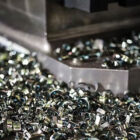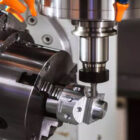Boring is an industrial procedure used to create holes with lathes and mills that requires a variety of different instruments and equipment. A surface is first drilled with holes before the boring process. Once the holes have been produced, they are precisely sized for the application using boring equipment. The two fundamental components required to bore a hole are a boring bar and a boring head; and additional components such a cartridge and adaptor are also required. Let’s look at the many types of boring bars and heads that are frequently utilized.
Types of boring bars
The boring bar is a cylindrical cutter to which a boring tool or utter is attached. Deep bores can be machined using top-notch boring bars. Carbide bars are the ideal solution when maximum rigidity is required, particularly when finishing excessively long bores. Almost every machine shop has basic boring bars with carbide inserts since they are widely available and reasonably priced. Unlike drills or reamers, single-edge boring bars only make contact with one point of the workpiece. As a result, the bar is unsupported, which occasionally results in chatter or vibration. Chatter problems are the only significant drawback to these cutting instruments. But, with the proper steps, this chatter problem can be resolved. These bars can be lengthened by axial manipulation and clamping in tiny tool holders. Hydraulic tool holders are suggested in this situation. Hard roughing is not advised when solid carbine bars are to be used. Compared to typical steel shank tools, heavy metal boring bars offer better rigidity and vibration dampening. These bars are appropriate for lengthy bores with ratios greater than 5:1. Because to their thick structure and machinability, they are more durable than carbide. Both hydraulic and milling chucks are suggested for holding these bars in position.
Types of boring heads
Boring heads are used to create big diameter holes when employing a drill bit is not possible due to tolerances or when a large enough drill bit or reamer is not available. In some cases, a boring head can also be used to extend or modify the centerlines of holes. The most basic boring head is used to bore a wide range of hole diameters since it may be positioned in various locations and can move the boring bar closer to or farther away from the hole’s axis to generate the appropriate hole diameter. However, finishing tight-tolerance holes frequently necessitates the use of specialist boring tools, such as fine boring heads, that can be precisely adjusted in minute increments for the desired results. These boring heads come in a variety of styles; some make use of regular circular boring bars and others utilize special insert holders. According on the use and objective, the boring head can be chosen. Nonetheless, due to their high cost, these boring heads are frequently utilized for bored holes with tolerances smaller than 0.025 mm in diameter. After a hole is bored, other options include back boring and face grooving heads, as well as chamfering insert holders. In addition, some heads with the right cutter angles can help finish the process without requiring the part to be manually moved, a tool change, or a modification to the cutter angle.
Regardless of the boring operation and tool, machinists must pay special attention to every detail as well as the techniques and tools used. A boring operation’s success may depend on a number of factors, but following the correct procedures will guarantee the desired outcomes. The workpiece’s components should be firmly supported, the tool’s diameter should be as large as is practical, and the length of the unsupported tool should be reduced to a minimum if the chatter needs to be reduced.
Whether you require a boring bar, a boring head, any other boring accessory, or perhaps a complete boring kit, FineTech Toolings is your one-stop store. FineTech Toolings are the most dependable boring bar and precision boring head manufacturers in Bangalore, as every product manufactured here is industry-specific and meets with international quality requirements.






